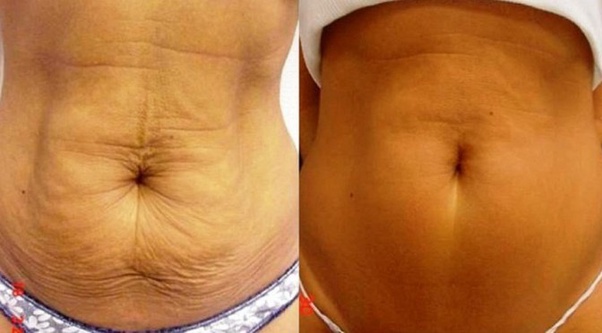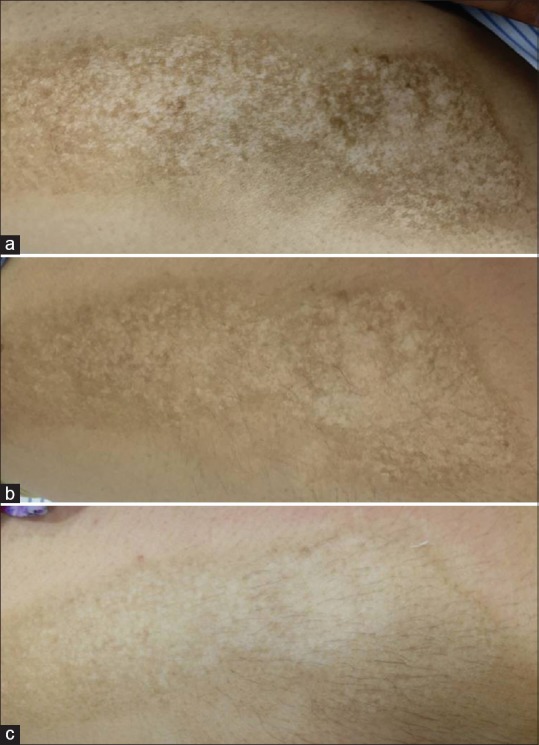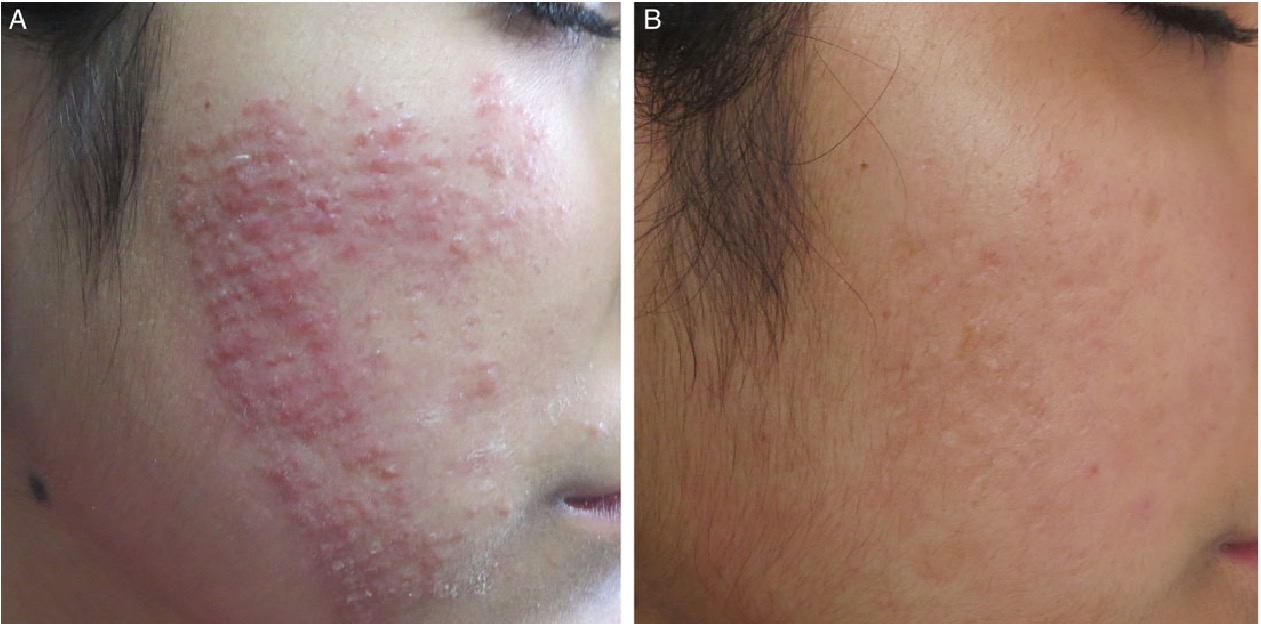 First and foremost, whatever a woman or man chooses to do with their body is entirely up to them. Let's get that straight. So if someone decides to showcase their stretch marks or undergo cosmetic procedures, let it be. With that being said, I also would like to see our society normalizing the reality of our natural bodies and celebrating them!
First and foremost, whatever a woman or man chooses to do with their body is entirely up to them. Let's get that straight. So if someone decides to showcase their stretch marks or undergo cosmetic procedures, let it be. With that being said, I also would like to see our society normalizing the reality of our natural bodies and celebrating them!How does this apply to dermarolling?
This is a historic procedure in which an instrument with tiny microneedles puncture the skin and stimulate local collagen production in a minimally invasive manner. Dermarolling can address: acne scars, general scars, enlarged pores, wrinkles, stretch marks, uneven skin tone, sun damage, loose skin (elasticity/collagen), thinning hair, melasma, dilated veins, cellulite, and more. Also known as collagen induction therapy or percutaneous collagen induction, it is an increasingly popular treatment modality for skin rejuvenation.
It has evolved over the years but initially gained attention in the 1990s. "Tattooing without pigment" for the treatment of achromatic and hypertrophic scars. Eventually it gained attention in the medical field where the concept developed into drum-shaped device with fine protruding needles to puncture the skin. Microneedling devices have expanded in recent years and now include both cord- and battery-powered pens and rollers, with needles ranging in length from 0.25 to 3.0 mm. Dermarolling preserves the overall integrity of the epidermal layers, allowing the epidermis to heal without abnormalities. This technique can be combined with other surgical techniques to provide better results. In particular, it is a very safe technique for dark skin types, where risk of postinflammatory pigmentation (PIH) is very high with other techniques that damage the epidermis.

What to expect when dermarolling at home
When using a dermaroller, using instruments longer than 0.25 in needle length at home is NOT recommended unless under the guidance of a medical doctor. Please, for the safety of yourself.
The dermarolling at home, you should not experience pinpoint bleeding when rolling (little dots). However, on occasion this can occur with longer lengths, in which it is normal and harmless. You want to make sure the area you choose to treat is cleansed and antiseptic is applied. Apart from the occasional pinpoint bleeding, you will not bleed after rolling, neither will your face swell up for days. Some minor swelling and redness for a day or two can occur. The rolled area will be red and feel like sunburn following the treatment. The rolled area might start “peeling”a little after some days. Don’t pick, pull or scrub away flaking or peeling skin.
How soon will I see results?
As small punctures are created, the injury triggers the wound healing cascade and alters the modulation of growth
 factors to promote regenerative effects. It increases your elastic fibers, collagen, and dermal thickness. The full cycle of collagen production is a gradual but slow process. It is important to establish expectations first and not expect quick miracles. It can take months at a time to attain substantial results, but this is all dependent on conductive treatments like your homeware and in-office treatments. It is essential to stay consistent and utilize the best skincare that is meant for broken skin to allow for optimal healing. Rolling more frequently does not provide better results. The skin has to regenerate and utilizing good skincare will help to build upon your results by continuously boosting collagen production.
factors to promote regenerative effects. It increases your elastic fibers, collagen, and dermal thickness. The full cycle of collagen production is a gradual but slow process. It is important to establish expectations first and not expect quick miracles. It can take months at a time to attain substantial results, but this is all dependent on conductive treatments like your homeware and in-office treatments. It is essential to stay consistent and utilize the best skincare that is meant for broken skin to allow for optimal healing. Rolling more frequently does not provide better results. The skin has to regenerate and utilizing good skincare will help to build upon your results by continuously boosting collagen production.  How can you prepare?
How can you prepare?Dry brushing! You can also use a new toothbrush (including an electric one) if your areas are not large. Do not wet the brush or the skin. Dry brushing the skin will make it easier to roll by exfoliating dead skin, increasing the penetrability of skin care products and it increases blood flow. Dry brushing by itself brings some improvement to certain scars and stretch marks and makes the skin very smooth and glowing. Two to four weeks before starting a dermarolling session, dry brush the skin a few times a week. Do not brush delicate areas like the breasts, neck or face too hard! Then incorporate vitamin C and retinoids into your routine. Vitamin C in the morning and vitamin a (retinoids) at night. These two ingredients provide a powerhouse cocktail for collagen production. Vitamin A influences 400–1000 genes that control proliferation and differentiation of all major cells in epidermis and dermis, and Vitamin C is essential for production of normal collagen.
Things to be cautious of:
People with the following should not derma roll at home:
Dermarolling has its own set of limitations despite its of effective uses and advantages. It is less efficacious in some types of scars such as pitted scars, linear scars, and deep boxcar scars. However, combined with good skincare and in-office treatments, dermarolling can improve results. Certain adverse effects to be mindful of include: erythema (redness) and irritation which usually subside within a few hours, post-inflammatory hyperpigmentation, aggravation of acne and reactivation of herpes, systemic hypersensitivity, allergic granulomatous reactions and local infections following the use of a nonsterile instrument. Allergic contact dermatitis to materials used in the needles, and tram-track effect (linear papular scars over bony prominences of the face) due to poor technique This can be avoided by using less pressure and smaller needles over these areas.

I hope this helps as a general guide! Dermarolling is relatively safe under strict guidance but I only provide detailed instructions to patients of mine due to safety being my highest priority.
with love....
#amareaesthetics
#dermarolling #dermaroller #collageninduction #microneedling
References:
Aesthet Surg J. 2016 Apr;36(4):NP168-70. doi: 10.1093/asj/sjv229.
